When is a lily not a lily? As it turns out, quite often. Many of the plants that we call lilies — canna lily, lily of the Nile, daylily and calla lily — are, in fact, not lilies at all. Although equally stunning, those flowers belong to different plant genus altogether, so don't get confused if you are looking to add true lilies to your garden. True lilies grow from bulbs and have impressive and often intricate flowers. When you look at the plant tag, it will have
Lilium in the botanical name. Many have vivid colors and exotic markings, like splotches and brushstrokes, making lilies an exuberant addition to any garden.
Caution: All parts of the lily plant are toxic to cats. Please use extreme caution when planting. More plants to keep away from pets
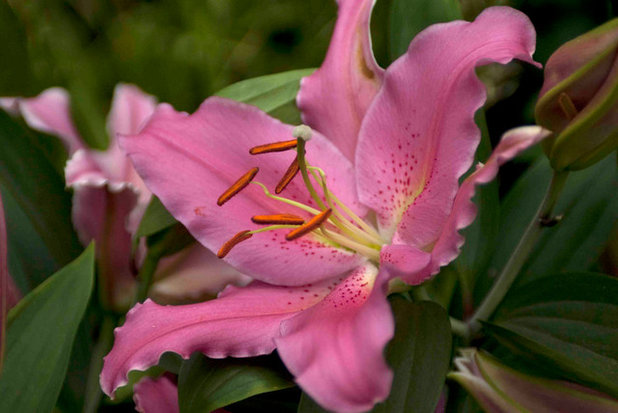
The New York Botanical Garden
Shown: Lilium 'Acapulco'
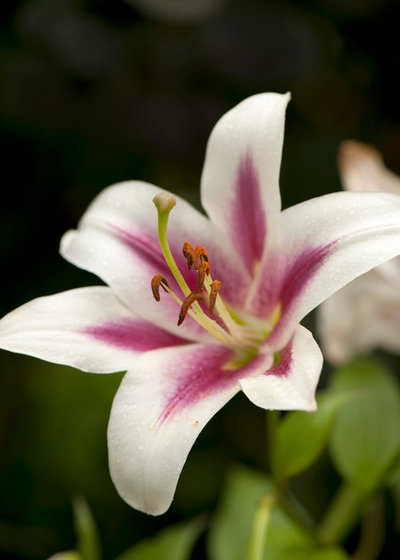
The New York Botanical Garden
Botanical name: Lilium spp
Common names: Easter lily, Oriental lily, Asiatic lily, hybrid lily
Water requirement: Medium to high
Light requirement: Full sun to partial shade
Mature size: 2 to 6 feet tall, depending on variety
Benefits: Showy and fragrant flowers
Seasonal interest: Spring and summer blooms; later blooms can be expected from some varieties
When to plant: Spring or fall, depending on species
Cautions: Toxic to cats
Shown: Lilium 'Altari'
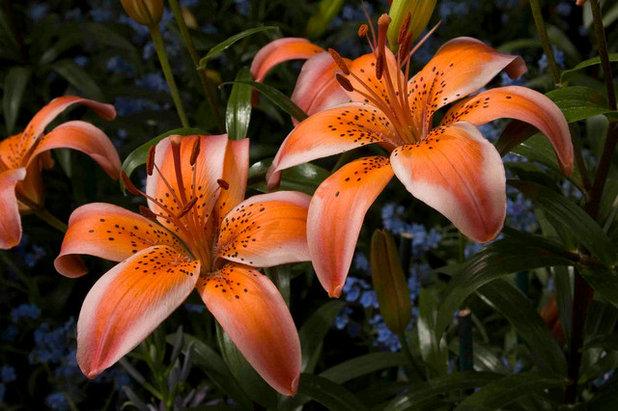
The New York Botanical Garden
Distinguishing traits. Lilies are tall perennials, with large blooms in colors including pink, purple, white, orange, yellow and red. The flowers can have spots, splotches and brushstroke markings as well as different-colored throats.
Look for varieties ranging up to 6 feet tall for the back of your border, or smaller varieties to blend in with other colorfully flowering plants. Great varieties to try are 'Electric', 'Altari', 'Acapulco' and 'Tyrol'.
Shown: Lilium 'Electric'

Glenna Partridge Garden Design
How to use it. Lilies combine well with many other flowering perennials and tend to work best in gardens that have a traditional, formal or cottage style. Use them in containers, as houseplants, in mixed beds and borders, and as a focal or specimen plant in your garden.
Tip: If you choose to grow lilies in containers, be sure to fertilize more often to keep them healthy and blooming — a slow-release fertilizer will work well.
Shown: Lilium 'Casa Blanca'
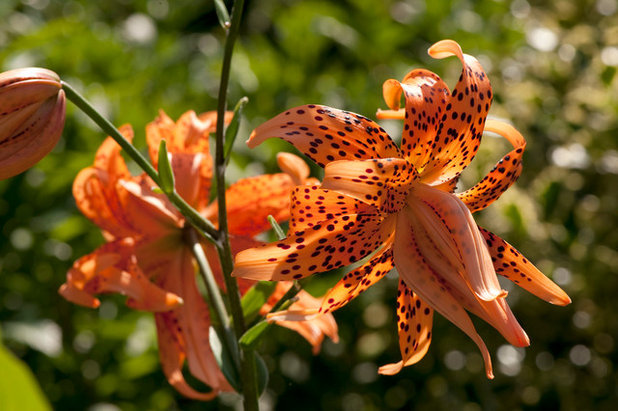
The New York Botanical Garden
What to look out for. All that exotic goodness does not come without a cost, as lilies can fall prey to pests and diseases. Keep an eye out for aphids, red lily beetles, slugs and snails, and signs of damage from voles, deer, groundhogs and rabbits. They can also be vulnerable to gray mold during wet weather, plus powdery mildew and bulb rot.
Use slug or snail bait if you see those critters and insecticidal spray for beetles and aphids. Use chemicals with care, though, to avoid killing off the good bugs. Powdery mildew can be avoided by allowing some space around plants for adequate air circulation. With a little extra care and attention, these amazingly showy and fragrant flowers will return in your garden for years to come.
Shown: Lilium 'Pumilum'
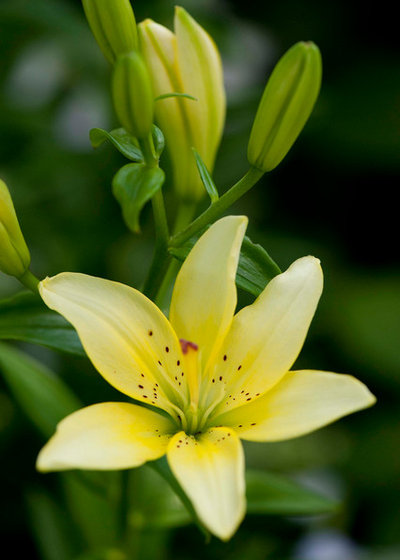
The New York Botanical Garden
Planting notes. Lily bulbs are typically planted in the fall, but if you are planting your Easter lily in the spring, just be aware that you will not likely see another bloom on it for a year or more.
Shown: Lilium 'Tyrol'
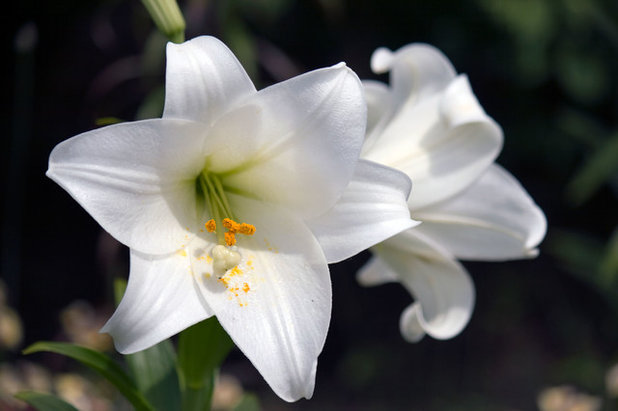
The New York Botanical Garden
- Plant the bulb a minimum of 3 inches below the soil (check planting depth recommendations for your specific bulb).
- Choose a sunny site with well-drained soil to avoid rotting the bulb out.
- Most lilies like shady feet and sunny heads, so be sure to mulch around the base of the plant to keep it cool or plant a lower-growing annual or perennial around it to shade the roots of the lily.
- You can also plant lilies in areas of your garden that receive morning sun and afternoon shade to accomplish the same goal. You may need to stake the taller lilies to keep them from falling over with broken stems.
Shown: Lilium longiflorum 'Snow Queen'
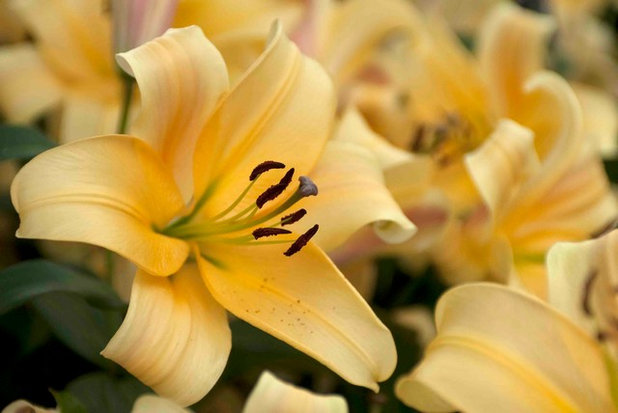
The New York Botanical Garden
Popular lily types:- Asiatic: Early bloomers with the broadest range of colors, including most of the unscented lilies. Opt for 'Royal Sunset' or 'Blackout'.
- Oriental: Fairly difficult to grow, Oriental lilies have large late-summer flowers and a heavy scent. They prefer acidic soil and moist, temperate summers. Try 'Flying Circus', 'Hot Spot' or 'Enjoy'.
- Trumpet and Aurelian: Easy to grow, these lilies are often late-summer bloomers, nicely scented. They typically need staking due to their taller height. Try 'Madame Butterfly', 'Midnight' and 'Summer Palace'.
- Orientpet: American hybrids that are a cross between Oriental and trumpet lilies. They have bold colors, are disease resistant and tolerate heat but not direct sun. Look for 'Baruta' or 'Anastasia'.
Shown: Lilium 'Valparaiso'





